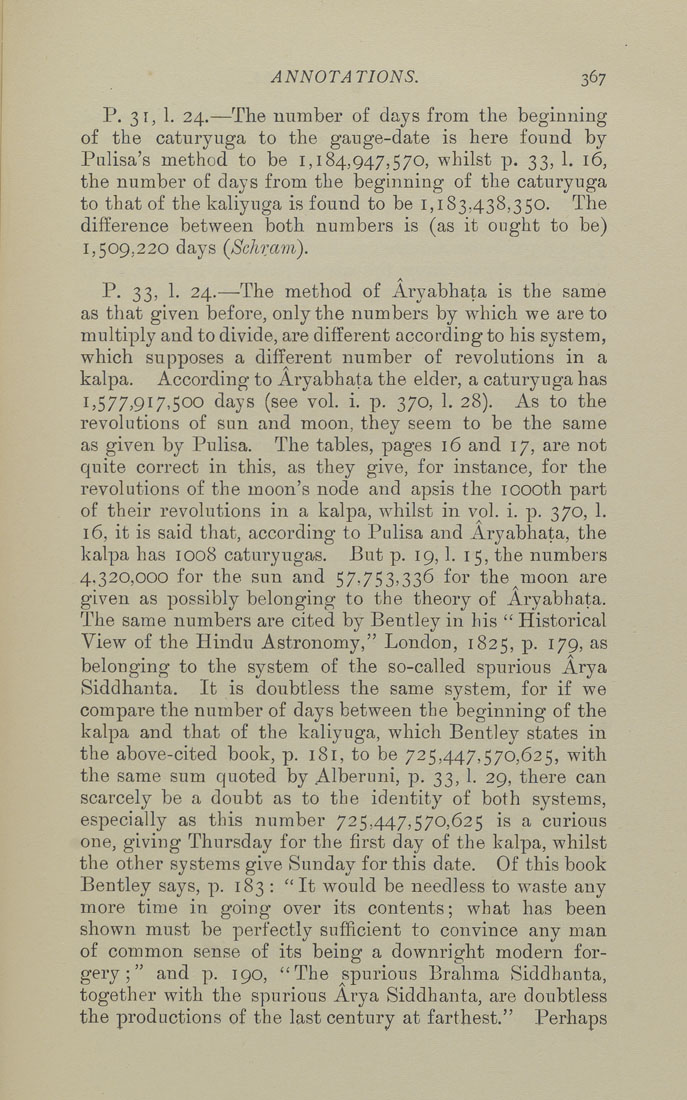ANNOTATIONS. 367
P. 31, 1. 24.—The number of days from the beginning
of the caturyuga to the gauge-date is here found by
Pulisa's method to be 1,184,947,570, whilst p. 33, 1. 16,
the number of days from the beginning of the caturyuga
to that of the kaliyuga is found to be 1,183,438,350. The
difference between both numbers is (as it ought to be)
1,509,220 days (Schram).
P. 33, 1. 24.—-The method of Aryabhata is the same
as that given before, only the numbers by which we are to
multiply and to divide, are different according to his system,
which supposes a different number of revolutions in a
kalpa. According to Aryabhata the elder, a caturyuga has
1,577,917,500 days (see vol. i. p. 370, 1. 28). As to the
revolutions of sun and moon, they seem to be the same
as given by Pulisa. The tables, pages 16 and 17, are not
quite correct in this, as they give, for instance, for the
revolutions of the moon's node and apsis the icooth part
of their revolutions in a kalpa, whilst in vol. i. p. 370, 1.
16, it is said that, according to Pulisa and Aryabhata, the
kalpa has 1008 caturyugas. But p. 19, 1. 15, the numbers
4.320,000 for the sun and 57,753,336 for the moon are
given as possibly belonging to the theory of Aryabhata.
The same numbers are cited by Bentley in his " Historical
View of the Hindu Astronomy," London, 1825, p. 179, as
belonging to the system of the so-called spurious Arya
Siddhanta. It is doubtless the same system, for if we
compare the number of days between the beginning of the
kalpa and that of the kaliyuga, which Bentley states in
the above-cited book, p. 181, to be 725,447,570,625, with
the same sum quoted by Alberuni, p. 33, 1. 29, there can
scarcely be a doubt as to the identity of both systems,
especially as this number 725,447,570,625 is a curious
one, giving Thursday for the first day of the kalpa, whilst
the other systems give Sunday for this date. Of this book
Bentley says, p. 183 : "It would be needless to waste any
more time in going over its contents; what has been
shown must be perfectly sufficient to convince any man
of common sense of its being a downright modern for¬
gery ;" and p. 190, "The ^spurious Brahma Siddhanta,
together with the spurious Arya Siddhanta, are doubtless
the productions of the last century at farthest." Perhaps
|








